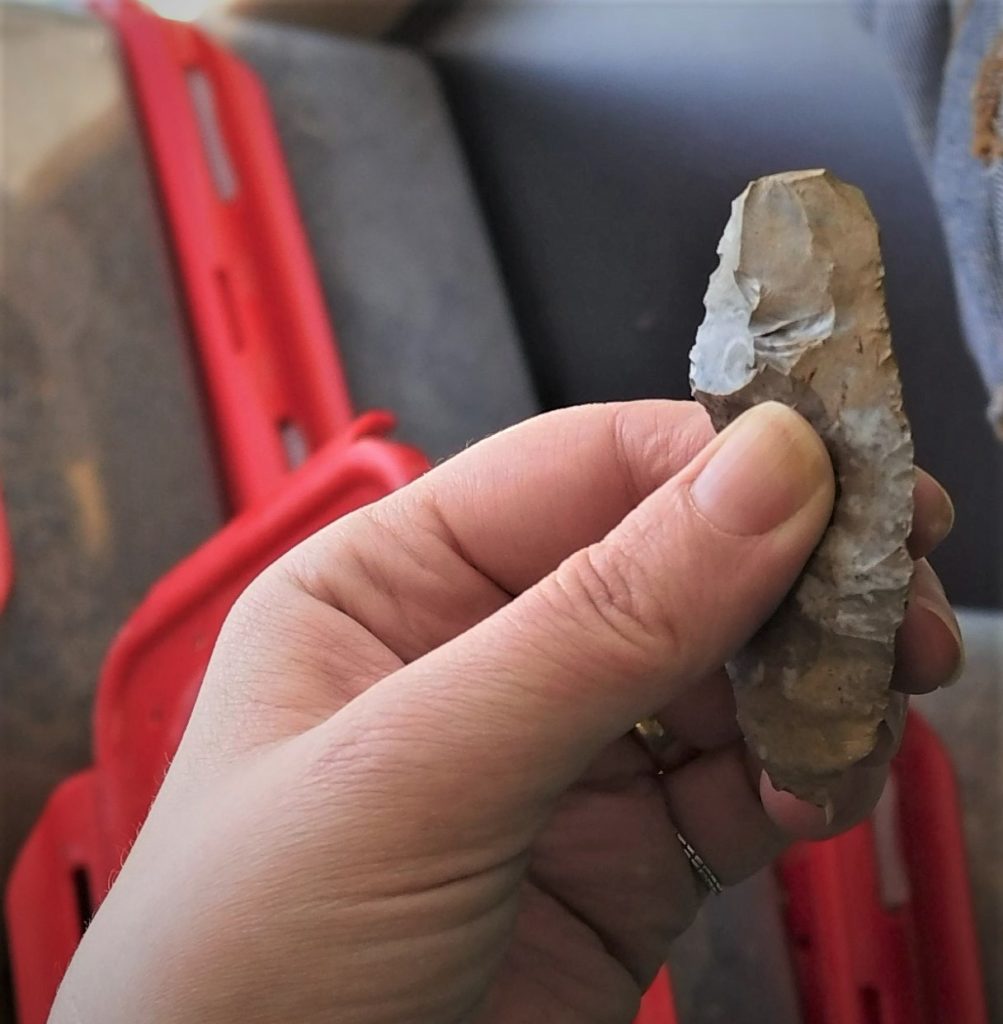The Research Potential and Challenges of Unpublished Legacy Collections: The Quackenbush Site
Research on never-published legacy collections can contribute in meaningful ways to the narrative of the past. But it can also present unique problems. Our contribution focuses on the research potential and challenges presented by the collections and records from the Quackenbush site, a pre-contact Iroquoian settlement in the Kawartha Lakes region that was excavated by […]
Population movements of the Huron-Wendat viewed through strontium isotope analysis

Environmental isotopes can provide information about the composition of groups and the movement of people across landscapes. The archaeological record of Huron-Wendat communities in south-central Ontario is one of numerous drainage-based sequences of small villages among which families or larger population segments moved. These villages amalgamated in the early to mid-sixteenth century into fewer, larger […]
Farmers, Fishers, Hunters and Trades — Indigenous Communities on Georgian Bay

Discover the marvel that is Georgian Bay, its hidden history, its storied rock, culture, and the fragile nature that abounds here. The Bay has been home to Indigenous people for thousands of years. Samuel Champlain canoed it in 1615 marveling at its maze of islands. The Bay was a significant part of the fur trade […]
Nineteenth-century Working Class Residential Transience and Stability: Three Properties in Toronto’s St. Andrew’s Ward
Transience, or residential mobility, is the reality for many working-class and impoverished urban people. This was as much the case in the nineteenth century as it is today. Based on examinations of nineteenth- and twentieth-century demographic patterns and individual or household movements in a variety of Toronto neighbourhoods, it is possible that such movement was […]
Nineteenth-century Working-Class Residential Transience and Stability in Toronto’s St. Andrew’s Ward: Examining Differential Effects on Artifact Assemblages
When excavating historical archaeological sites, we often view them through the lens of assumed permanence, or at least an extended and significant occupation. Our interpretations about the intersections of social realities with material culture are then built upon a framework of stability and longevity. These assumptions create a one-to-one relationship between occupants and assemblage; Family […]
Teiaiagon on the Humber River: Controlling the Western Branch of the Toronto Carrying Place
The settlement of Teiaiagon, located on the Humber River near the limit of upstream travel by canoe, existed for less than a generation between the early 1670s and late 1680s. During this brief period, however, it may have become the most important of the Haudenosaunee villages established on the north shore of Lake Ontario, as […]
Come from the Shadows: Metals on the Iroquois Frontier
The metal assemblages of Iroquois du Nord villages in and around the north shore of Lake Ontario are examined to provide insight into the chronological, technological and cultural aspects of these short lived, late 17th century settlements. These are compared and contrasted with the metal assemblages of contemporary Haudenosaunee sites to the south of Lake […]
Iroquois du Nord Decorated Antler Combs: Reflections of Ideology
The Seneca produced more decorated antler combs than any other Iroquoian-speaking group, an increase in their production coincident with the introduction of iron tools and the growth of their political and military strength in the post-1650 period. This paper will describe the combs that have been recovered from Kente, Bead Hill and Teiaiagon and show […]
Left Handed Stone Knife

A Lithic Analyst’s Ode to a Stone Knife The loss of a favourite pocket knife was an alarming incident for many a young boy or girl growing up. Maybe it was the perfect whittling knife we carried with us as Scouts or Guides, or a “coming-of-age” gift from Grandpa. Nevertheless, in a few days we […]
Industrial Malting Tiles Found on Toronto Hospital Site

In July 2018, ASI undertook a Stage 4 salvage excavation of lands that were once part of the original Hospital Reserve in the Town of York, now Toronto. The hospital was an important public institution during the cholera epidemics of 1832 and 1834, and most particularly the typhus epidemic of 1847. The July 2018 work also […]


